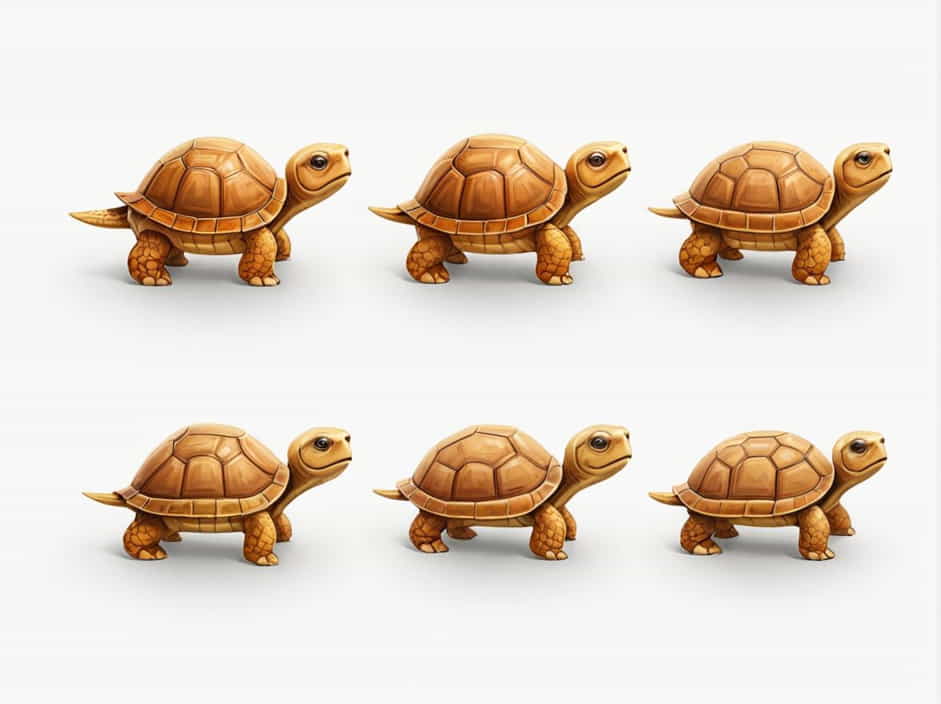Many people use the terms turtle and tortoise interchangeably, but they refer to different types of reptiles. Both belong to the order Testudines, but their habitats, physical characteristics, and behaviors are distinct.
This topic explores the key differences between turtles and tortoises, including their appearance, habitat, diet, and lifespan.
What Is a Turtle?
A turtle is a reptile that spends most of its life in water. Turtles have webbed feet or flippers, which help them swim efficiently. They are commonly found in oceans, rivers, lakes, and ponds.
Physical Characteristics of Turtles
- Shell Shape: Turtles have flat, streamlined shells for better movement in water.
- Feet: They have webbed feet or flippers that aid in swimming.
- Size: Can range from small freshwater species to large sea turtles like the leatherback turtle.
- Skin: Their skin is generally smoother and adapted to a semi-aquatic or aquatic lifestyle.
Habitat and Distribution
Turtles are primarily found in:
- Oceans (sea turtles)
- Freshwater lakes and rivers (pond turtles, terrapins)
- Brackish water environments (some species of terrapins)
Diet and Feeding Habits
Turtles are omnivorous, meaning they eat both plants and animals. Their diet includes:
- Aquatic plants and algae
- Fish, insects, and small amphibians
- Fruits and vegetables (depending on species)
Lifespan of Turtles
Turtles can live for several decades, with some species, like the Galápagos tortoise, living over 100 years.
What Is a Tortoise?
A tortoise is a reptile that spends its entire life on land. Unlike turtles, tortoises have thick, sturdy legs instead of webbed feet, which helps them walk on rough terrain.
Physical Characteristics of Tortoises
- Shell Shape: Tortoises have a domed, heavy shell that provides protection from predators.
- Feet: Their feet are thick and strong, resembling those of an elephant.
- Size: Some tortoise species, like the Aldabra tortoise, grow to enormous sizes.
- Skin: Their skin is rougher and more adapted to dry conditions.
Habitat and Distribution
Tortoises are found in dry, terrestrial environments, such as:
- Deserts
- Grasslands
- Forest floors
Diet and Feeding Habits
Tortoises are herbivores, meaning they primarily eat plant-based foods, including:
- Grass and leaves
- Fruits and flowers
- Cacti and succulents
Lifespan of Tortoises
Tortoises live longer than turtles, often surpassing 100 years. Some species, like Jonathan the tortoise, are known to live over 190 years.
Key Differences Between Turtles and Tortoises
| Feature | Turtle | Tortoise |
|---|---|---|
| Habitat | Mostly aquatic, lives in oceans, rivers, and lakes. | Terrestrial, found in dry environments. |
| Shell | Flat and streamlined for swimming. | Domed and heavy for protection. |
| Feet | Webbed feet or flippers for swimming. | Thick, sturdy legs for walking. |
| Diet | Omnivorous (plants and animals). | Herbivorous (mostly plants). |
| Lifespan | 20-100 years (depending on species). | Often over 100 years, some live past 150 years. |
Turtles vs. Tortoises: A Closer Look
1. Movement and Speed
- Turtles are faster in water due to their streamlined shells and webbed feet.
- Tortoises are slower because of their heavy shells and sturdy legs.
2. Swimming Ability
- Turtles are excellent swimmers and spend most of their lives in water.
- Tortoises cannot swim and will drown if placed in deep water.
3. Egg-Laying and Nesting
- Turtles lay eggs near water and hatchlings quickly move to water.
- Tortoises lay eggs in burrows or dry land, and hatchlings remain on land.
4. Social Behavior
- Turtles are often more social and may live in groups.
- Tortoises are generally solitary and prefer to live alone.
Interesting Facts About Turtles and Tortoises
- Turtles have been around for over 200 million years, making them one of the oldest reptile groups.
- The Galápagos tortoise can weigh over 900 pounds, making it the heaviest tortoise species.
- Sea turtles travel thousands of miles during migration.
- Tortoises can go months without food or water, thanks to their slow metabolism.
Which One Makes a Better Pet?
- Turtles require a water habitat, special lighting, and a balanced diet.
- Tortoises need spacious enclosures, a dry environment, and fresh vegetables.
- Both require long-term care, as they live for decades.
Although turtles and tortoises belong to the same reptile family, they have distinct differences in habitat, physical traits, and lifestyle. Turtles are aquatic, have webbed feet, and are omnivores, while tortoises are land-dwelling, have thick legs, and are herbivores.
Understanding these differences helps us appreciate their unique adaptations and the roles they play in nature.
